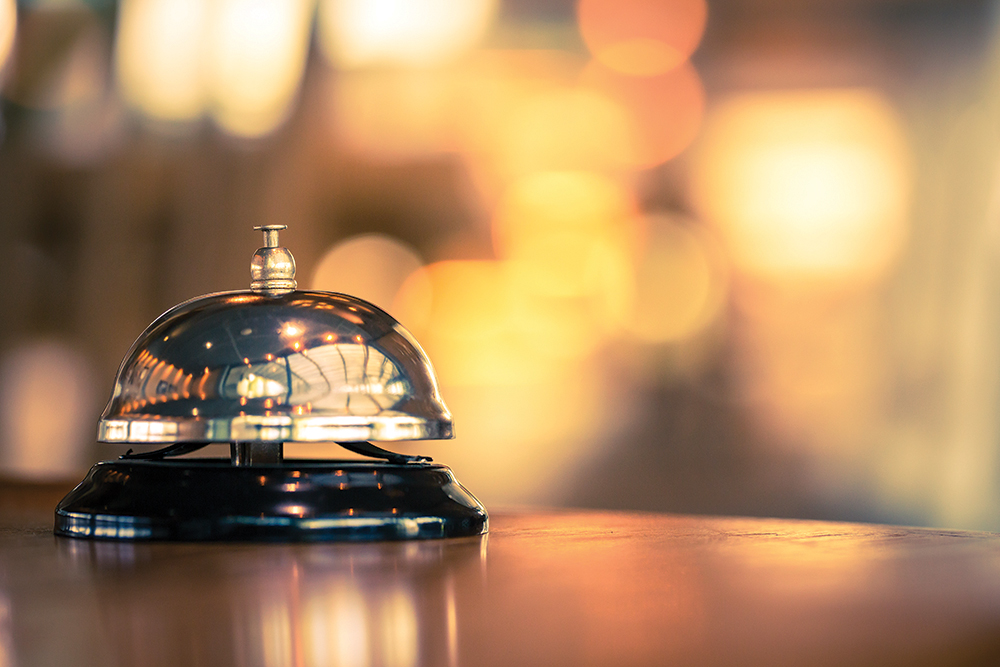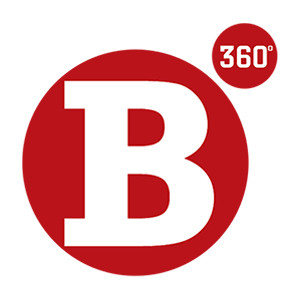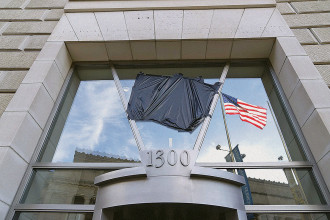
The ‘Travel and Tourism Economic Impact 2023’ report published by World Travel and Tourism Council shows that the total GDP contribution of tourism and travel in Nepal in 2023 was 6.8% which accounts for Rs 488.3 billion. In 2022, it was Rs 101.0 billion (2.1% of GDP). The direct contribution of travel and tourism to GDP is expected to grow by 4.3% per annum to Rs 168.3 billion (2.4% of GDP) from 2023 to 2033. Similarly, travel and tourism generated 311,125 jobs directly in 2022 (1.9% of total employment). This includes employment by hotels, travel agents and leisure industries directly supported by tourists. By 2033, travel and tourism will account for 412,028 jobs directly (2% of total employment), an increase of 2.2% per annum from 2023.
It was only in 1951, when Nepal’s political landscape transformed that it opened itself to the world. This period witnessed a series of groundbreaking developments like the historic ascent of Mount Everest by Edmund Hillary and Tenzing Norgay in 1953. This feat thrust Nepal onto the global stage, capturing the imagination of adventure seekers worldwide. Recognising the increasing interest, the government took proactive measures to establish a framework for tourism development. In 1956, the National Planning Council on Tourism was created to strategise tourism promotion. The same year also saw the formation of the National Tourist Development Board, tasked with spearheading tourism initiatives. Understanding the need for connectivity, the government established Royal Nepal Airlines Corporation (now Nepal Airlines Corporation) in 1958, the country’s first national carrier. This move not only facilitated easier access for tourists but also bolstered Nepal’s presence on the international travel map. Nepal’s membership in the International Union of Official Travel Organisations in 1959 further cemented its commitment to integrating with the global tourism landscape.
The subsequent decades saw a rise in tourist arrivals, with Nepal’s breathtaking mountain ranges, unique culture and trekking opportunities becoming a major draw. However, the industry navigated periods of instability due to various factors like Nepal’s political landscape witnessing periods of unrest, including the 1999 plane hijacking, the 2001 royal massacre, and a decade-long Maoist insurgency. These events inevitably impacted tourist arrivals. External events like the 2008 economic recession and the devastating 2015 earthquake also delivered setbacks to Nepal’s tourism industry. In recent years, the Covid 19 pandemic and the subsequent economic slowdown have also posed a significant challenge.
Nepal’s tourism industry faces ongoing challenges. Ensuring political stability and investing in infrastructure development, particularly transportation networks in remote areas, are essential to attract a wider range of tourists. Additionally, balancing the benefits of tourism with environmental and cultural preservation remains a critical concern. Nepal’s rich biodiversity and unique cultural heritage are irreplaceable assets, and sustainable tourism practices are vital to ensure their continued existence for future generations.
Recognising the growing trend of repeat visitors, the government has over time introduced multiple entry visas, online visa application system, regulations to standardise trekking operations, promoted homestays in rural areas and boutique hotels, invested in expanding and upgrading airport infrastructure for improved air connectivity, focused on infrastructure development, promoted eco-friendly tourism practices to minimise the environmental impact, invested in conservation efforts and through the Nepal Tourism Board actively participated in international tourism fairs and promotional campaigns. The government is now increasingly collaborating with the private sector to develop tourism infrastructure and promote new tourism products and destinations.
Yet, the efforts seem inadequate with investors in the tourism and hospitality business remaining largely dissatisfied. There is however a surge in the number of new properties being built and several new international hotel brands making a foray into the market. The question arises whether the pie has increased or it just means intensified competition for the same business.
In this edition of Business 360, we spoke specifically to individuals from the hotel industry to gain their perspective on how the present government’s initiatives, policies, rules and regulations define and impact what they do.
What are the key challenges of the tourism industry, particularly the hospitality sector?
Prabin Bahadur Panday: Currently, in the tourism industry, you can identify three major problems. The first is related to policy matters, secondly infrastructure, and lastly the country not adopting this sector wholeheartedly
In terms of policy, the hospitality sector has not been recognised as an industry in itself. That recognition will facilitate adopting various laws that are relevant to the sector. This recognition may be limited to hotels who are at a certain size, have a certain star-rating and give employment to an appropriate number of people. This recognition, as an industry in its own right, will also follow with certain hotels being able to avail various specific loans and such.
The classification of hotels is done by the Department of Tourism. Hotels that have a rating of above 3-star are taken care of by the federal government, while those below are being done by the provincial government. The members of HAN number at 3,500, but government records show only 300-400 members registered for a licence to operate a hotel. Such policy matters need to be mandated. There is no option for a driver to not have a driving licence. Hotel registration needs to be equally mandated, as it is not just the starred hotels who exist; there are many small-scale hotels in Nepal that are just as important as the starred hotels. It is an international requisite that if someone is staying at a place for more than 24 hours and paying, the place needs to be registered as a hotel. So, the process to get such licences needs to be digitised and made accessible.
The hospitality sector also works in collaboration with many other industries. The members of Hotel Association Nepal alone can boast employing around 10 lakh people. Speaking about the number of people employed through satellite industries, we cannot even begin to give an estimate. We always strive to promote our local produce, whether it be tea or coffee, we have followed a farm to table model and encourage others to do the same.
The accumulated funds of Nepal Tourism Board are not being utilised properly. It has been 25 years that we have heard of 10 lakh tourists. Even if the numbers improved by 10% each year, we should have reached 50 lakh tourists by now. - Prabin Bahadur Panday, Managing Director, Shangri-La Hospitality and Vice-President of Hotel Association Nepal

Rajiv Desraj Shrestha: Hotel owners face significant challenges during off-seasons, including low guest numbers. Introducing policies to attract guests during these periods could be beneficial, such as offering special promotions or discounts. Embracing new technologies to enhance the hotel sector’s efficiency and guest experience, akin to international standards, is crucial. Moreover, a lower interest rate environment would alleviate financial burdens, enabling investment in improvements and marketing. Additionally, addressing the shortage of skilled human resources through training and development initiatives is essential for maintaining service quality. Additional air connectivity to international countries is required and more airlines need to fly in. Usage of the two new international airports of Pokhara and Bhairahawa needs to be explored and utilised immediately.
Ravi Nischal: I think one of the biggest challenges that we have currently is to deal with connectivity. Nepal has just one international airport, which I think is too small to cater to the kind of demand that you can create. We already crossed a million tourists last year, and to take this further I think the bottleneck is going to be the airports. Particularly if the other airports, whether it be Lumbini or Pokhara, can’t take the load off.
I think the other challenge is infrastructure, especially in terms of building roads. While there is an enormous amount of work that’s going on, which is great, but anyone in Nepal can see that the roads always have work being done on them.
Thirdly, how do you make business sustainable especially in terms of being environmentally sensitive? Tourists come here for the wildlife and for nature. A big question is how do we keep this sustainable. You see so many articles about pollution in the Himalayas. In recent days, air pollution has been on the rise. So that could be a big challenge in the days ahead.
Shahil Agrawal: The main challenge is the insufficient and improperly managed infrastructure to grow and sustain tourism in Nepal, such as airports and roads. The lack of comfortable arrival and departure experience is another hurdle. Lack of intra-city and inter-city transportation facilities poses a challenge too. The other area we need to look into is the expensive air tickets to arrive into Nepal, due to exorbitant landing and parking charges and high duties in aviation fuel. We also face connectivity challenges.
Does price war exist between hotels?
Prabin Bahadur Panday: In an open market economy, the government does not fix the rate. If the government tries to change that, there is always a chance that the market might reject that. So, that decision is left to the hotels themselves. But hotels need to honestly fix charges according to their size and quality of service. A recent challenge we have faced is in regard to AirBnb. Most major cities in the world have strict regulations concerning AirBnB’s, where most of them are not allowed to lend out their houses for short periods, only long stays, to protect the industry. It’s not viable to move an entire industry into residences. That is why it is our request to all the municipalities to pay attention to the presence of such services in their cities and make appropriate regulations immediately. Another problem with such services is that they do not appear on the tax net, a common problem with many online services.
Ravi Nischal: In any kind of market there will always be price wars. So, it’s more about how you differentiate your product from the others. I wouldn’t say there’s a price war. It’s always healthy competition and I think that’s how we should look at it.
Shahil Agrawal: I believe there will always be competition in the hospitality sector, with more and more hotels coming up all around the country. However, if we can keep the demand increasing in the way it currently is, the overall hospitality industry can do well. If the country is unable to tackle the challenges faced by this sector in the short and long run, there will again be a rise of unhealthy competition due to low demand.
How accurate and helpful is the classification of hotels done by the Department of Tourism in Nepal?
Prabin Bahadur Panday: The Department of Tourism is responsible for the classification of hotels. But the members involved in deciding these things come from various backgrounds like hotel management schools, agriculture department’s food, technology and hygiene authorities and more. HAN is a member as well. These standards are amended and changed according to the times. The standards were set with reference to the standards of 15-16 countries. The necessity of these standards lies in making sure that both domestic and international tourists get what they pay for.
These standards exist but they have not been given to everyone, and they are not being monitored properly either. So, the full effect of these standards has not come about. It is also not fair to those who fulfil every criteria, register properly and follow every regulation if those who are not as thorough get the same rating.
Rajiv Desraj Shrestha: It definitely helps consumers make informed decisions by providing clear benchmarks for the quality and services offered by different hotels. This enhances transparency and trust, leading to increased customer satisfaction and loyalty. The classification system incentivises hotels to maintain and improve their standards in order to achieve higher ratings. This drives competition within the industry, motivating hotels to invest in staff training, infrastructure upgrades and service enhancements to meet or exceed the classification criteria. As a result, the overall quality of accommodation and services in the hospitality sector is elevated.
First and foremost, Nepal Tourism Board needs to be totally separated from the workings and trappings of the government and a very knowledgeable and farsighted leader with a similar team is required at the helm to steer NTB. - Rajiv Desraj Shrestha, General Manager, The Pavilions Himalayas
-AI-Upscaled-1717665648.jpg)
Ravi Nischal: That’s always subjective. I would say, there will always be hotels who aspire to be somewhere but don’t really meet the criteria. I wouldn’t say that there is any misuse. It’s always good to go back to review the standards occasionally, which I am sure the government does. I think the process is fair, as long as the whole process is followed. Obviously, the star rating does certainly help a business. It’s certainly marketable and you need that to be able to position yourself, especially as you have more and more hotels coming in. It’s important how the guests perceive the hotel as well.
Shahil Agrawal: Classification done by the government body is helpful but not completely accurate, as it is done using very traditional methodology and basic criteria. For example, in Nepal any hotel that has 100 rooms and some other listed facilities can be rated as a 5-star facility. This cannot be accurate as the standard of rooms, its amenities, size, services and lots of other things can differ from one hotel to the other.
How effective is Nepal Tourism Board in promoting Nepal? Additionally, how effective are HAN, PATA and other such tourism institutional bodies in lobbying for effective policy making and implementation?
Prabin Bahadur Panday: Firstly, Nepal Tourism Board needs to solve the issue of funding for international travel. The board has not represented the country at many big tourism marts for a long time. So, associations like us have to pick up the slack so as to not let the entire industry suffer. The accumulated funds of Nepal Tourism Board are not being utilised properly. It has been 25 years that we have heard of 10 lakh tourists. Even if the numbers improved by 10% each year, we should have reached 50 lakh tourists by now.
Speaking on HAN’s role, we are not a part of the government. But our president has been very proactive in trying to promote Nepal as a destination. There are constant changes in the government that hamper growth in all sectors. We constantly work towards reminding the government, not just verbally but through writing and the media about the various issues that still plague Nepal’s growth, so that despite changes whoever is there presently is up to date with the problems.
Rajiv Desraj Shrestha: First and foremost, Nepal Tourism Board needs to be totally separated from the workings and trappings of the government and a very knowledgeable and farsighted leader with a similar team is required at the helm to steer NTB. Then NTB needs more impactful marketing campaigns, particularly emphasising trekking adventures, crucial for hotels catering to adventure tourists. The government’s efforts in revising TIMS and declaring Pokhara as Nepal’s tourism capital are commendable steps. Street festivals in Pokhara and promoting pilgrimage sites across Nepal further enhance the country’s appeal. Himalayan promotions also contribute positively. These initiatives reflect the government’s commitment to boosting tourism.
Ravi Nischal: There will always be opinions and there is nothing which is perfect. But I would say just the fact that we have been able to bounce back post-Covid so well, I think something is working and it’s obviously these agencies and the government and the private sector working together to make it happen.
I would also say with new hotel chains and expansions coming in, that itself puts pressure back on the industry. The pressure back from the industry itself is something which keeps us on our toes. I think yes, there is an opportunity to improve. There’s always an overlap between various sectors, and I believe you can’t work in isolation. Of course, the Hotel Association Nepal is effective. But I think also what we need to see is how we can work with other stakeholders better. If we just wanted to focus on hotels and you lose some of that. So, I would recommend working together. If every stakeholder has something to add on to work together and grow together then it would be better.
Shahil Agrawal: I think NTB has been trying to promote Nepal with their available resources. It has been effective to a certain level but there is always space for improvement and betterment. HAN, PATA and other such institutional bodies have also been continuously lobbying for effective policy making and implementation, however, the changes have been very slow. There has been progress but the tourism industry of Nepal still has not been able to unleash even 15% of its potential and that is due to some major challenges which still remain unsolved.
What are your views on international chains entering the market?
Prabin Bahadur Panday: The international chains that are establishing themselves in Nepal are not really here because it is Nepal. This is a part of a huge push into the entire South-Asian market. These hotel chains have been pushing into India as well, a country that does not really need tourism but still excels at developing infrastructure geared towards promoting tourism. In India, these hotels do not need to attract tourism from abroad as there is a huge domestic travel population. This population travels for business, which is the reason for the success of these chain hotels as they provide familiarity. Domestic and international tourists who travel for business prefer familiarity and they can come to expect the same degree of comfort from such chain hotels. These perks come on top of the membership benefits these chains offer. In the past there were few locations where most of the tourism in the world came from. The same cannot be said anymore. The convenience of booking through mobile applications and the guarantee of safety they provide have boosted the popularity of these chain hotels.
Rajiv Desraj Shrestha: The hospitality sector in Nepal is experiencing significant growth, evidenced by the influx of multinational chain hotels such as Marriott, Hilton, Intercontinental, Dusit, Taj, to name a few. This expansion brings both opportunities and challenges. With increased competition from these global brands, local hotels face pressure to compete on rates and amenities. However, this surge also translates into positive outcomes, including job creation, a rise in tourist numbers and an increase in foreign exchange earnings. Despite offering high-quality accommodation, food and service, local Nepali hotels contend with the challenges of pricing and marketing in a fiercely competitive landscape shaped by these international giants.
Ravi Nischal: I think it’s great to have more international hotels come in. I think it helps reposition the country, the sector and the country’s tourism. The reach of each brand is fairly wide and that is going to help us grow the business. Also, I think the fact that international hotels are coming in is helping us see a resurgence of luxury travel to Nepal, something that we were losing out on. But now you see the big brands coming in and showing interest. I would say everyone is facilitating that. Whether it’s the Hotel Association Nepal or the government and the tourism policies, all the stakeholders are working together to be able to move in the right direction, which is very clear headed.
The fact that international hotels are coming in is helping us see a resurgence of luxury travel to Nepal, something that we were losing out on. But now you see the big brands coming in and showing interest. I would say everyone is facilitating that. - Ravi Nischal, Cluster General Manager - Operations, Nepal & General Manager, Vivanta Kathmandu
-1717665874.jpg)
Shahil Agrawal: There have been a lot of new hotel projects that have been launched. Lot of them are soon getting launched and more are in the pipeline post the earthquake in 2015. It has not really increased since its peak but definitely it has come back to its peak levels achieved in the past. However, it is an increasing trend. Definitely competition has increased in the short run. But if we look back, since 2001 to 2015 there were hardly any new hotel projects that were launched. Lot of the older properties that have been there for a long time were also not upgraded. Nepal needs more and more newer hotels and different types of projects to cater to the demands of the modern traveller. The good thing now is that the focus of hotel industries is not only in Kathmandu and Pokhara but all around the country including the border region of Nepal and India. This attracts lots of tourists from the bordering states of India to come to Nepal and enjoy the beauty and facilities offered by the country.
I think this is a good trend as more and more hotel chains are entering Nepal. This helps to develop the hotel sector in various ways. As the chains also bring with them the expertise, experience and marketing skills to help both the hotel industry and the tourism sector in a wholesome manner.
What percentage of your revenue is domestic?
Prabin Bahadur Panday: The data that we have, which is not official data, showcases international to domestic tourists to be at a 60-40 ratio. A lot of hotels come up with packages during the off-season. These packages are extremely popular with domestic tourists and you can see many hotels packed during the weekends. Domestic tourism saw a massive increase after the Covid 19 pandemic. Due to efforts from the government and HAN and others to make hotels safe and used for isolation, housing and supporting health workers by offering them free accommodation to isolate. Following which we introduced isolation packages, which gained popularity. People started travelling more, following a shift in the mindset. Earlier not travelling was seen as saving money, now not travelling is seen as wasting the life you have.
Ravi Nischal: It is very interesting. We have three hotels in Nepal now. We have the Meghauli Serai which is a Taj safari. It’s a luxury safari lodge in Chitwan. Interestingly, that sees 30% of its business coming from the domestic sector, whereas the Vivanta, which is more of a business hotel in the city, sees about 20% of its business from the domestic sector.
So, what’s interesting to see is how people are spending. Even domestic travellers are spending on luxury travel, which we have clearly seen at Meghauli Serai. I think that people are willing to spend that money. It depends on the segment for business but we have a fairly substantial contribution from the domestic business as well.
I don’t think where the customer comes from is important. What is important is that we have something to offer to different segments. Nepal has been known for budget tourism, which is not true anymore. So, each hotel has to be able to find the space and position itself. I think there is something to offer for all segments in Nepal, whether it’s at the budget level or the upper upscale level or the upscale level or the luxury.
Shahil Agrawal: This is a natural phenomenon seen around the globe. Domestic tourism will always play a big role in the overall tourism space, as Nepal has a population of 20 million people living in the country, and even if 10% of them travel it makes it two million domestic tourists. In terms of revenue, it is difficult to say, however, I believe the contribution of domestic tourism towards the hotel sector should not be less than 20%.
Nepal is still marketed as a budget destination? What are your thoughts?
Prabin Bahadur Panday: When it comes to budget tourism, the problem lies with airfare. Spending on a budget in Nepal can only happen after you are already in Nepal, and airfare is not cheap. Only after one spends the high, non-negotiable amount on airfare can they budget for other aspects like their food, hotel, shopping, etc. Only when flight prices are brought under control can Nepal welcome and attract all kinds of tourists. Road travel as an alternative will definitely be a plus in the future with the Asian Highway being built. We have also never done a showcase programme of Nepal as a destination to our neighbours who each have billions of citizens. Maybe, it could also be too early as we might not be prepared right now.
Ravi Nischal: I don’t think that’s the way forward and I don’t think it’s really being marketed as such. It’s probably been perceived as a budget destination. But I think that perception is changing. I think we are headed in the right direction, like I spoke earlier with all these international hotel groups, including us, the Indian Hotels Company Ltd is very aggressive about its growth in the country. It’s a little premature to talk about it now but we have various projects planned in the luxury space. I see other hotel brands being extremely aggressive. So, I think that perception is certainly something which is changing and will change fast.
Shahil Agrawal: It is true that Nepal has been marketed as a budget friendly destination since the 60’s and 70’s. Nepal has the potential to cater to all segments of tourists. I believe that we can neither restrict ourselves to only medium/high end tourism, nor should we only depend on mass budget friendly tourists. As we have so much to offer, we should focus our marketing on medium and high-end tourists, at the same time allow the budget traveller to visit the country, especially the tourists from neighbouring nations and the pilgrimage tourists.
I believe there will always be competition in the hospitality sector, with more and more hotels coming up all around the country. However, if we can keep the demand increasing in the way it currently is, the overall hospitality industry can do well. If the country is unable to tackle the challenges faced by this sector in the short and long run, there will again be a rise of unhealthy competition due to low demand. - Shahil Agrawal, Managing Director, Shanker Group, (Hilton)
-1717666050.jpg)
Are skilled human resources an issue in the hotel industry?
Ravi Nischal: I think human resources is a major area of concern and I think it has more to do with the fact that a lot of youngsters today are heading out of the country. I think we have been blessed to be in relation with such people. The current generation of youngsters have good communication skills and are extremely hospitable, which is why I think they are just being lapped up by countries around the globe.
Yes, manpower is a problem. But I think we are also fortunate that there are enough people who are interested in hospitality. I see a lot of students interested in joining hospitality as a business, which is a trend which has changed perhaps in other parts of the world, certainly in India. Hospitality for some reason is beginning to lose its charm for students because they find other opportunities in the service industry. I don’t see that as much in Nepal. I still see kids who are very enthusiastic about learning hospitality. So, I think it is important to harness that talent and keep them within the country. I think that will also come with the fact that as we have more and more larger brand hotels coming in, these youngsters will find more opportunities to work within the country and see career growth, which perhaps was not possible earlier.
About poaching, I don’t consider this poaching. There will always be people looking for those with experience and talent. So, it just helps our businesses grow.
Shahil Agrawal: With the growing number of properties in Nepal, definitely, finding trained human resources is going to be a challenge, especially when a lot of the younger generation is wanting to go abroad to study and look for job opportunities. However, there is a huge Nepali population working in the tourism industry especially hotels in the Middle East, Malaysia and other parts of the world, lots of whom are wanting to come back to Nepal if they get a good opportunity. As new hotels come in, poaching will be there to some extent, until the market stabilises.
What are your thoughts on the Visit Nepal Decade?
Prabin Bahadur Panday: Tourism Decade is about planning. If we can prepare our infrastructure and gear the policy towards bringing people to Nepal, I believe this initiative will be a success. However, it is imperative that we host a mega event to promote Nepal as a tourism destination. We should also make sure the initiative does not clash with other countries.
Rajiv Desraj Shrestha: While the government’s master plan includes a Tourism Decade from 2023 to 2033, progress towards its goals has been slow. Despite the initial announcement, a year has elapsed without the implementation of any strategic programme. To fully leverage the potential of this initiative, the government must allocate more budgetary resources towards tourism development. This investment should focus on identifying and establishing new trekking routes, enhancing existing tourist spots, diversifying tourist activities, and improving infrastructure such as roads and transportation networks. Additionally, measures to reduce airfare would make travel more accessible and further stimulate tourism growth.
The private sector plays a crucial role in driving tourism in Nepal, encompassing various aspects such as hotels, resorts, restaurants, travel agencies, tourist guides, paragliding, bungee jumping and more. Indeed, the vitality of the tourism industry heavily relies on the initiatives and investments made by private enterprises. However, to ensure sustained growth and competitiveness, there is a pressing need for continuous improvement in various areas. This includes enhancing the quality of services offered, fostering professionalism among staff members, optimising cost efficiency and maintaining a high standard of hospitality. By prioritising these aspects, the private sector can contribute significantly to elevating Nepal’s tourism industry to greater heights while providing memorable experiences for travellers from around the world.
Ravi Nischal: Different people may have different opinions, but why not? Why can’t we have a ‘Visit Nepal Decade’? If this is a period where you, as a country, want to focus on repositioning ourselves as a destination, why not? You don’t build tourism in a day for sure. If there is a focused approach over a decade, with very distinct targets, it could be mid-term, three years, five years, 10 years. As long as you have a certain strategy in place, I think it’s good to have a ‘Visit Nepal Decade’.
Shahil Agrawal: It is a good sign that the country is focusing on demand generation and it is a process which can take up to a decade as the potential is huge. Domestic aviation and connectivity have really grown which have helped the tourism sector, however, as mentioned above international connectivity is still poor and expensive which needs a lot of focus.
How do you view the removal of service charge?
Ravi Nischal: I think this is something that happened before I moved to Nepal and it certainly did have an impact. There is always a transition period where people may feel the impact, but there is nothing wrong with not having a service charge. Either way, it’s good to have a service charge, but if you remove it, that’s fine as well. I think the flexibility lies with our guests. If you personally ask me, it’s really unfair to have a fixed service charge. I think that the challenge is to see how we see the manpower through this transition because it impacts them. But over a period of time, I think compensation levels will also fall in place to cover up for the shortfall. I think all the hotel businesses have tried to do their bit to soften the blow for our colleagues.
Shahil Agrawal: I think in an underdeveloped country like Nepal, service charge was a good income source for the human resource working in hotels and restaurants. It was an extra motivation for them to make customers happy. With the removal of service charge there has been an extra burden transferred to the hotel and restaurant industry.
What are the things Nepal needs to give immediate attention to, to enhance the country’s appeal as a tourism destination?
Prabin Bahadur Panday: Most dire is the infrastructure development. In terms of infrastructure development, most of Nepal’s prime tourist destinations like Pokhara and Lumbini need a focused effort towards highway construction. There are many efforts already in place but our request to the government is for them to stick to the deadlines already mentioned in the agreements between them and the contractors. These projects being completed will undoubtedly increase tourism, not just international but domestic as well, by threefold. Before Covid a hundred vehicles used to drive to Pokhara. We estimate more than 500 to drive to various regions of Nepal if these highways are completed, especially with the huge increase in the sale of private vehicles. These roads will also attract middle to upper middle-class tourists from India who are noted big spenders. We have even seen people driving to Nepal from China.
The other piece of necessary infrastructure are the airports which have already been constructed. The government needs to, by itself or by privatising it, bring business to it. We have not seen them promoting these airports. Nepal at the moment can accommodate around 20 lakh tourists. While these numbers definitely need to go up, we are only receiving around 10 lakh tourists. I believe we can reach those numbers with just the Tribhuvan International Airport expanding and the airport working at full capacity for 24 hours with sequential landing systems in place. If these measures were put in place and the airports in Pokhara and Bhairahawa were utilised to their capacity we could definitely reach 10-20% of the national GDP, all while increasing our foreign exchange reserves.
Improving accessibility to telecom services for tourists will also facilitate consumer satisfaction. For such provisions, collaboration with telecom providers is necessary. Such services being available at all the airports and land borders would make tourism that much better. It is more important to focus on internet connectivity than other telecom services.
Nepal has to work to take tourism as its number one priority because we cannot compete in manufacturing. Despite our efforts we are not self-sufficient in agriculture. We still import more than we export. The country is functioning majorly on remittance. Tourism still has not reached optimum capacity. Our hotels are not fully occupied and there is so much more we can do. I truly believe tourism can be the backbone of our country.
Rajiv Desraj Shrestha: Collaborating closely with the private sector can amplify promotional efforts and reach a wider audience. By targeting markets where Nepal’s tourism potential is underexplored, such as through strategic partnerships with travel agencies, online platforms and media outlets, the country can attract more visitors. Aggressive promotion should highlight Nepal’s diverse attractions, including trekking routes, cultural experiences and natural beauty, enticing travellers to explore lesser-known destinations. With proactive marketing initiatives and robust private-public partnerships, Nepal can unlock its full tourism potential and foster sustainable growth in the sector.
Regarding Nepal’s foreign investment policy, particularly the minimum investment threshold of $155,000 or Nepali Rs 20 million. I believe this amount should be reduced to facilitate smaller investors’ participation in Nepal’s economy. The current approval process, which involves multiple steps and approvals from various government departments such as the Department of Industry, Nepal Rastra Bank, and others, is cumbersome and time-consuming. Simplifying this process, perhaps through the implementation of a one-window policy, would streamline foreign direct investment (FDI) procedures and encourage greater investment inflow into the country. By reducing barriers to entry and administrative hurdles, Nepal can attract a more diverse range of investors and stimulate economic growth more effectively, particularly in under-developed regions.
Ravi Nischal: Talking about infrastructure, it is primarily about airports. But if you are talking about policy, people are extremely sensitive about the environment. So, it is necessary to ensure that people who are choosing destinations based on how sustainable the country is are attracted to Nepal. I think making the environment centre of tourism is important. So, some policy surrounding that, not only in hotels but other businesses as well is necessary. How can travel agencies be more sustainable? How can mountain climbing become a more sustainable business? How do we change that impression of Mt Everest being unsustainable? There are provisions that the government has taken. You have to carry your own garbage back. Obviously, there are good steps being put in place. How do you market that as well? There’s a lot of good stuff that we do. How do we make sure that that word gets out?
I certainly think about the kind of work that Bhutan does in terms of just being very sustainable in terms of its tourism. Having a more sustainable tourism policy is must.
That’s something that Bhutan does extremely well. Of course, we can’t do that exactly, in a sense that’s another extreme on how they manage their tourism. I think sustainability is the key here because there is so much beyond just the Kathmandu Valley. It’s the way we develop those new destinations. For Lumbini for instance, how do we ensure that that new destination, as it opens up, can accommodate enough tourists sustainably? Do you have a new airport, it needs to have more flights coming in. Then you have more and more hotels. It is important to ensure that the growth there is more sustainable.
Shahil Agrawal: TIA needs to be upgraded with a new terminal building, increased parking space and seamless immigration, security and baggage services. If feasible, moving the domestic flights out of TIA and establishing a domestic terminal within the outskirts of Kathmandu valley will help with the congestion.
The completion of the Nijgadh highway, airport and then Kathmandu-Pokhara highway is of utmost importance.
Required agreements for air space for Pokhara and Bhairahawa international airports with proper operation and marketing of these airports for them to operate in full-fledged manner catering to international tourists will improve Nepal’s potential as a tourism destination.






